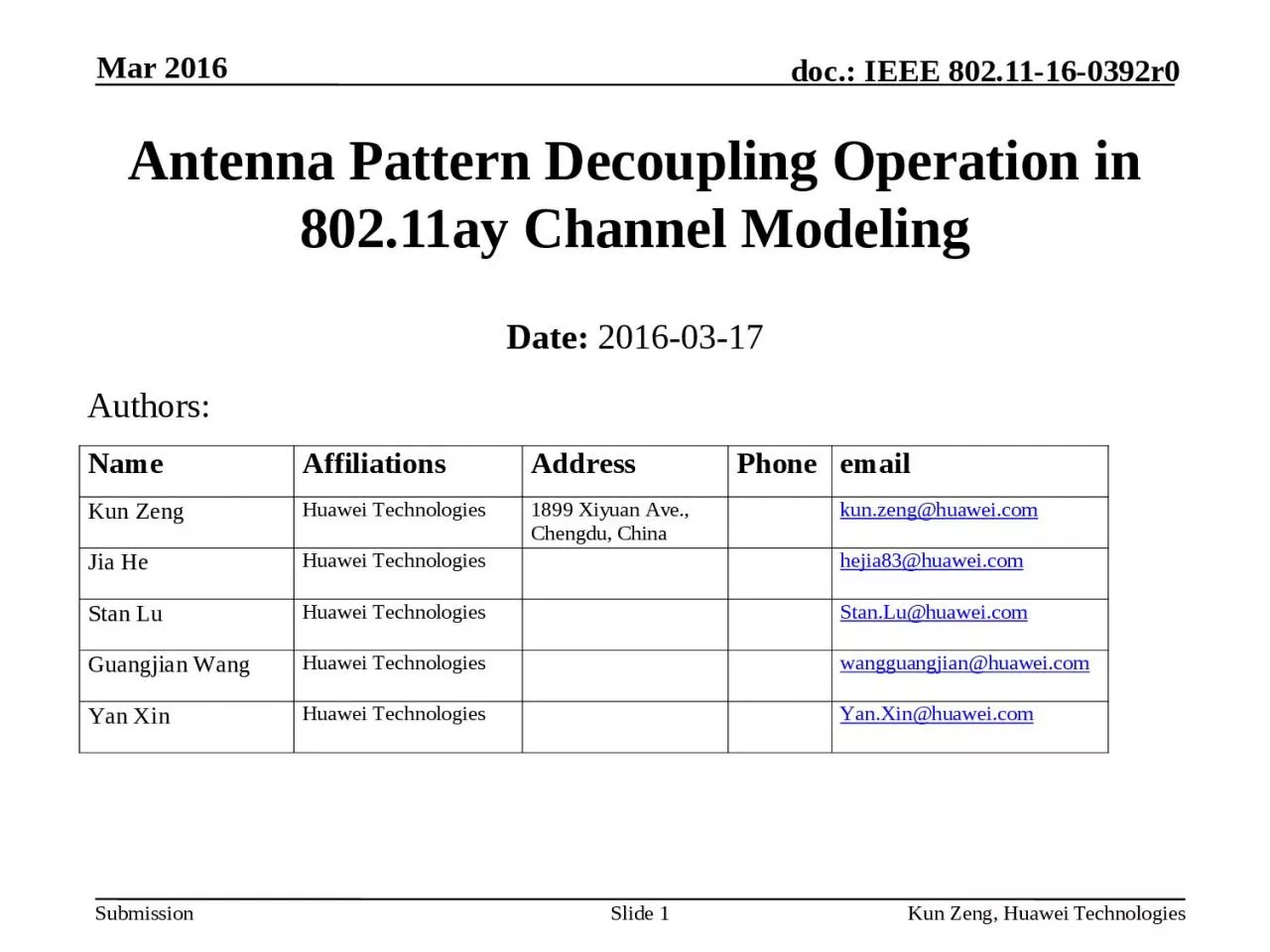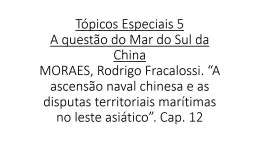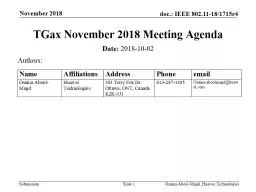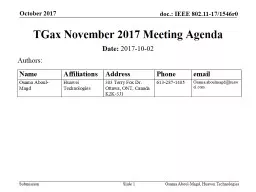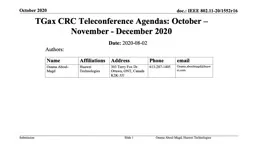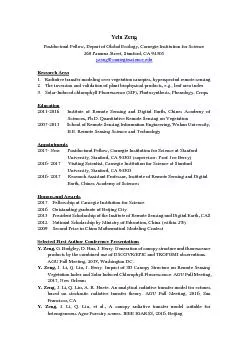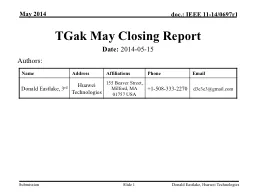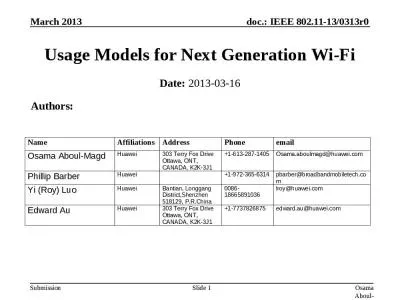PPT-Mar 2016 Kun Zeng , Huawei Technologies
Author : WonderfulWarrior | Published Date : 2022-08-04
Slide 1 Antenna Pattern Decoupling Operation in 80211ay Channel Modeling Date 20160317 Authors Mar 2016 Kun Zeng Huawei Technologies Slide 2 Motivation The effects
Presentation Embed Code
Download Presentation
Download Presentation The PPT/PDF document "Mar 2016 Kun Zeng , Huawei Technologies" is the property of its rightful owner. Permission is granted to download and print the materials on this website for personal, non-commercial use only, and to display it on your personal computer provided you do not modify the materials and that you retain all copyright notices contained in the materials. By downloading content from our website, you accept the terms of this agreement.
Mar 2016 Kun Zeng , Huawei Technologies: Transcript
Download Rules Of Document
"Mar 2016 Kun Zeng , Huawei Technologies"The content belongs to its owner. You may download and print it for personal use, without modification, and keep all copyright notices. By downloading, you agree to these terms.
Related Documents

